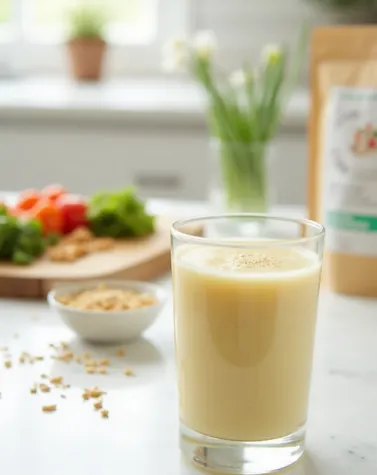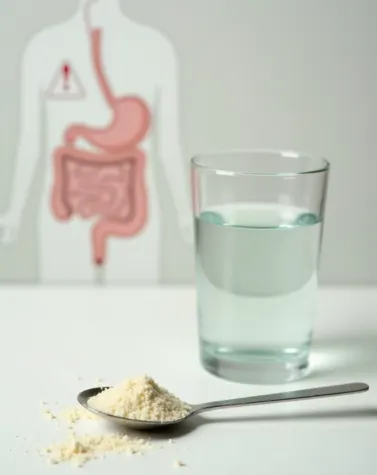
Essential Guide to FDA Approved Food Additives: What You Should Know
Food additives are functional ingredients used to improve texture, extend shelf life and keep food safe and consistent. From plant based thickeners to flavor enhancers, each additive is chosen for a purpose. Some are used to keep the nation’s food supply fresh while others are used to extend the shelf life of processed foods.
Common and valid questions often pop up in people’s minds about their safety and origin. This is where the U.S. Food and Drug Administration plays a central role. Through extensive safety reviews, clear regulations and public transparency, the FDA ensures every approved additive, including those listed as GRAS, can be used confidently across consumer products.
Types of Food Additives
Food additives fall into two categories – direct additives that are intentionally added for a purpose like guar gum for thickening or potassium sorbate for preservation and indirect additives that are not part of the recipe but may migrate from packaging or processing surfaces. They serve key roles of:
- Preservation to keep products safe and stable
- Texture control in sauces, spreads and dairy alternatives
- Flavor balance and pH adjustment
- Color and clarity for visual consistency
FDA Regulation and Approval
The Food and Drug Administration regulates substances added to food, including additives and ingredients. FDA approval is required for new additives and ingredients before they can be used in food products. Before any food additive can be used in the United States, it must meet strict safety standards set by the U S Food and Drug Administration.
The process starts with a food additive petition which includes detailed data on how the ingredient is made, how it will be used and how much consumers are likely to eat. The FDA reviews this petition by evaluating:
- The chemical identity and purity of the additive
- Toxicological studies and safety data
- Expected exposure levels across different age groups
- How the body processes the ingredient
If the data shows a reasonable certainty of no harm, the additive is approved for use under specific conditions. There is also a separate path called GRAS or Generally Recognized as Safe. This applies to ingredients with a long history of safe use or strong scientific consensus.
GRAS ingredients don’t require FDA pre market review but must meet the same safety standards. Both ways are designed to protect public health while giving manufacturers flexibility to innovate with confidence.
Categories of FDA Approved Additives
Whether you are formulating for shelf life, mouthfeel or label appeal, here is how the FDA classifies approved additives:
1. Preservatives
These keep food safe and stable. Common picks are potassium sorbate, sodium nitrite, citric acid.
2. Sweeteners
These deliver sweetness with or without calories and are used in sugar free beverages, protein bars, flavored waters.
3. Emulsifiers and Stabilizers
These support texture, prevent separation and improve consistency. Hydrocolloids like guar gum are key players here, along with xanthan gum and pectin.
4. Flavor Enhancers
These make savory flavors pop. Some examples are MSG, autolyzed yeast, disodium guanylate.
5. Color Additives
These are used for visual consistency and flavor cues. Some examples are Annatto for yellow-orange tones, FD and C Blue 1 for beverages.
Safety Standards for Food Ingredients
Food companies must adhere to the safety standards, regulations and guidelines for the use of food additives and ingredients set by the FDA. They must test and evaluate the safety of new ingredients and additives before they can be used in food products. Outside experts from agencies such as the USDA are also involved in the evaluation and approvals.
As new information comes in, the FDA re-evaluates the safety of additives and ingredients too. So consumers can trust the FDA’s safety standards. Food manufacturers must also label products accurately and provide consumers with the correct information. The FDA works with companies to ensure compliance with regulations and to protect public health.
Reading Labels: What to Look For
Consumers are reading labels and so are the procurement teams. Knowing how additives are listed helps you choose ingredients that match your brand values. On the label, you can see:
- Ingredients listed by category and name – You will see things like ‘emulsifier (soy lecithin)’ or ‘color (beta carotene)’
- Functional names explaining the purpose – These include thickener, stabilizer, flavor enhancer or preservative.
- Chemical names sounding synthetic but being natural – Citric acid for instance is naturally found in citrus fruits.
To spot natural additives look for familiar sources like pectin, lecithin or guar gum. Synthetic additives have names like polysorbate or sodium nitrite. If your team is evaluating hydrocolloids, clarity on labeling helps you meet clean label goals and regulatory expectations.
Conclusion
Food additives are part of nearly every product on the shelf. What matters is how they are made, how they are used and whether they are safe to consume. The FDA’s regulations and approval process ensures that food additives are safe.
By working together, the FDA, food companies and consumers ensure that the food supply is safe and nutritious.
Related Insights on FDA Approved Food Thickeners
Food additives like thickeners play a vital role in ensuring product stability, texture, and safety. As discussed, the FDA regulates these ingredients to maintain public health standards. For readers looking to explore specific thickeners and their applications, the following resources offer deeper insights:
- FDA Approved Food Thickeners
Explore a comprehensive overview of thickeners that are recognized and approved by the FDA, including their roles in processed foods and their safety evaluations. - Guar Gum in the Food Industry
Learn how guar gum is used as a natural, FDA-compliant thickener in various food products, and why it’s favored for its functionality and clean label appeal. - Xanthan Gum Alternatives
Discover alternative ingredients to xanthan gum that meet both performance and regulatory standards, helping formulators achieve desired textures without compromising safety.
These articles complement the guide above and provide practical knowledge for food professionals, product developers, and informed consumers navigating the world of FDA-approved additives.





